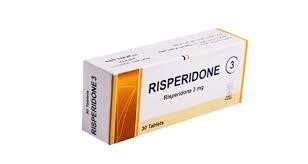A nurse is caring for a client who has a prescription for chlorpromazine. Which of the following findings should the nurse identify as an indication that the medication is effective?
Decreased blood pressure
Decreased hallucinations
Decreased cholesterol
Decreased esophageal reflux
The Correct Answer is B
- A: Incorrect. Decreased blood pressure is not an indication of chlorpromazine effectiveness, but rather a potential adverse effect that should be monitored and reported.
- B: Correct. Decreased hallucinations are an indication of chlorpromazine effectiveness, as this medication is an antipsychotic that blocks dopamine receptors in the brain and reduces psychotic symptoms such as hallucinations, delusions, and paranoia.
- C: Incorrect. Decreased cholesterol is not an indication of chlorpromazine effectiveness, but rather a potential benefit that may occur due to its effect on lipid metabolism.
- D: Incorrect. Decreased esophageal reflux is not an indication of chlorpromazine effectiveness, but rather a potential adverse effect that should be avoided by taking the medication with food or water and avoiding lying down after administration.
Nursing Test Bank
Naxlex Comprehensive Predictor Exams
Related Questions
Correct Answer is A
Explanation
Implement fall precautions for the client.
- A. Implement fall precautions for the client. This is correct because risperidone can cause orthostatic hypotension, which can increase the risk of falls and injuries. The nurse should advise the client to change positions slowly, avoid alcohol and dehydration, and use assistive devices as needed.
- B. Monitor the client's thyroid function. This is incorrect because risperidone does not affect thyroid function. The nurse should monitor the client's thyroid function if they are taking lithium, which can cause hypothyroidism.
- C. Place the client on a fluid restriction. This is incorrect because risperidone does not cause fluid retention or overload. The nurse should encourage adequate fluid intake and monitor the client's fluid balance.
- D. Discontinue the medication if hallucinations occur. This is incorrect because hallucinations are a symptom of schizophrenia, not a side effect of risperidone. The nurse should not discontinue the medication abruptly, as this can cause withdrawal symptoms and relapse of psychosis. The nurse should assess the client's response to the medication, report any adverse effects, and adjust the dosage as prescribed.

Correct Answer is ["A","C","E"]
Explanation
Since the client is experiencing upper chest discomfort and coughing up sputum, it is important to assess their oxygen saturation level. This finding can provide vital information about the client's respiratory status and the adequacy of their oxygenation.
The client's report of upper chest discomfort and coughing up thick clear sputum should prompt an assessment of their respiratory rate. Abnormal respiratory rates may indicate respiratory distress or compromise, which requires immediate attention.
Assessing the client's current level of consciousness is crucial, as any sudden changes in their mental status may indicate a serious underlying issue. Since the client has a history of Parkinson's disease and reported "feeling bad," it is important to evaluate their neurological status promptly.
The other options listed (tremors, heart rate, and chronic health condition) may also require follow-up, but they are not the most immediate concerns in this situation.
Whether you are a student looking to ace your exams or a practicing nurse seeking to enhance your expertise , our nursing education contents will empower you with the confidence and competence to make a difference in the lives of patients and become a respected leader in the healthcare field.
Visit Naxlex, invest in your future and unlock endless possibilities with our unparalleled nursing education contents today
Report Wrong Answer on the Current Question
Do you disagree with the answer? If yes, what is your expected answer? Explain.
Kindly be descriptive with the issue you are facing.
